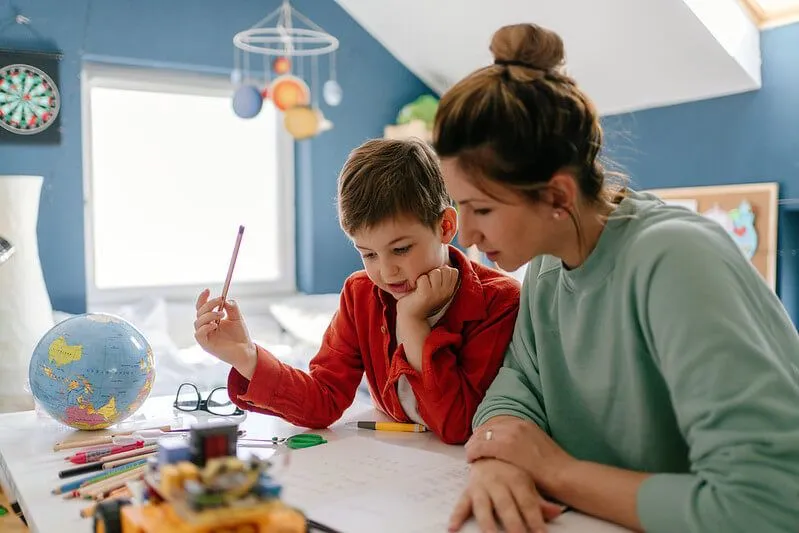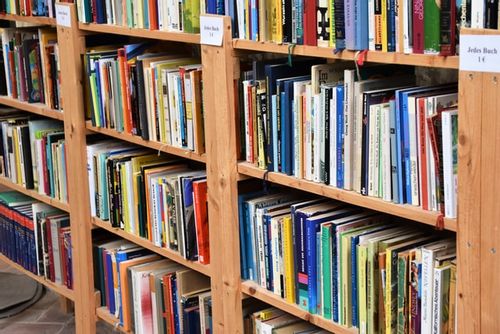FOR AGES 5 YEARS TO 7 YEARS
A split digraph might sound like something that comes out of the back of your TV, but, in fact, it's a key part of the KS2 English curriculum for your primary school-aged children, especially in Year 1 and Year 2.
If you want to help support their phonics learning without pretending that you know what you're talking about, here's everything you need to understand about split digraphs. Our free primary school online learning guide will turn you into a phonics pro in no time...
A digraph is a combination of two letters in a row in a word. So, this could mean two vowels in a row or two consonants in a row.
Some examples of vowel digraphs are: 'ai' (as in nail), 'oa' (as in goat) and 'ee' (as in been). Examples of consonant digraphs are 'ch' (as in chat), 'sh' (as in shoe), 'th' (as in theatre) and so on.
Digraphs only make one sound, unlike blends, which make two sounds eg 'st' in 'star'.

A split digraph is a vowel digraph that is split by a consonant, something your children will learn during their phonics lessons at school.
It might sound a little complicated or scary when you first hear such a technical-sounding phrase (for both parents and children). But it's actually pretty straightforward once you know the rules.
There are five split digraphs that you and your children need to know about. These are:
'a–e', 'e–e', 'i–e', 'o–e' and 'u–e'.
Remember that the – (dash) represents a consonant in all of the above.
You've probably already noticed the crucial link between this series: they all end in the letter 'e'. For this reason, some people also refer to split digraph words as having a 'magic e', or a 'silent e', on the end.
This a common spelling pattern that kids, and their parents, will need to get their heads around. The 'magic e' changes how a word is pronounced, and the sound of the vowels in the middle of the words, so it's important that children understand them.
Crucially, the magic e creates a 'long vowel' sound in the middle of a word.
So for example the word 'cap' becomes 'cape' and the sound of the 'a' changes in the process. 'Huge' becomes 'huge'. 'Man' turns into 'mane'. 'Pin' turns into 'pine'. 'Them' turns into 'theme'.
In general, the 'magic e' means that the vowel sound becomes longer and softer.
Here are some examples that you can give to your Year 1 and Year 2 children to help them learn just what a split digraph is, and the concept of a 'magic e'.
Cake, make, plate, take, lake, name, plane, mane, bake, late, safe, care
These are less common split digraphs, but some examples include:
these, theme, complete, delete, concrete
Note that the split digraph makes up part of a word in some of these examples.
This changes the 'i' sound into one that resembles the name of the letter.
Time, lime, line, write, file, bike, kite, life, ride
Notice with these words that the o vowel sound is usually long, but sometimes the 'o' sound can be shorter, as in 'l-ove', or longer as in 'l-one'.
come, bone, phone, woke, poke, love, dove
Rule, tube, huge, pure, tune, flute, cute

Children usually learn about split digraphs as part of the phonics KS1 curriculum in Year 1 and Year 2.
Why are children taught this rule? It's to help them understand how to spell, write, read and pronounce tricky words, and that vowel sounds can alter according to the letters that surround them. It moves them on from their early phonics lessons where they learned the alphabet and the basic sounds each letter makes.
They are taught by their primary school teacher, as part of Phase 5 of their KS1 lessons in Year 1 and Year 2, but it's important to understand these topics in KS2 as the concepts will still be in use.

Try the following with your children. Write out some words that can easily change into split digraphs on some pieces of card (the back of a cereal packet will do), so it's a free resource.
For example, car, rat, pin, tub, them, hug.
Then cut out some letter 'e's to put on the end.
Now, use them as part of a learning game. Ask your child to take one word at a time, and make a new one. Talk about the new spelling, the new sounds and the new meaning of the word, eg when 'car' turns into 'care', or 'mat' turns into 'mate' and so on.
This will teach them about new words, as well as the rules they need to understand. It will also help to expand their vocabulary.
Read The Disclaimer
At Kidadl we pride ourselves on offering families original ideas to make the most of time spent together at home or out and about, wherever you are in the world. We strive to recommend the very best things that are suggested by our community and are things we would do ourselves - our aim is to be the trusted friend to parents.
We try our very best, but cannot guarantee perfection. We will always aim to give you accurate information at the date of publication - however, information does change, so it’s important you do your own research, double-check and make the decision that is right for your family.
Kidadl provides inspiration to entertain and educate your children. We recognise that not all activities and ideas are appropriate and suitable for all children and families or in all circumstances. Our recommended activities are based on age but these are a guide. We recommend that these ideas are used as inspiration, that ideas are undertaken with appropriate adult supervision, and that each adult uses their own discretion and knowledge of their children to consider the safety and suitability.
Kidadl cannot accept liability for the execution of these ideas, and parental supervision is advised at all times, as safety is paramount. Anyone using the information provided by Kidadl does so at their own risk and we can not accept liability if things go wrong.
Kidadl is independent and to make our service free to you the reader we are supported by advertising.
We hope you love our recommendations for products and services! What we suggest is selected independently by the Kidadl team. If you purchase using the buy now button we may earn a small commission. This does not influence our choices. Please note: prices are correct and items are available at the time the article was published.
Kidadl has a number of affiliate partners that we work with including Amazon. Please note that Kidadl is a participant in the Amazon Services LLC Associates Program, an affiliate advertising program designed to provide a means for sites to earn advertising fees by advertising and linking to amazon.
We also link to other websites, but are not responsible for their content.
Was this article helpful?



Browse Category



We’ll send you tons of inspiration to help you find a hidden gem in your local area or plan a big day out.



Check your inbox for your latest news from us. You have subscribed to:
Remember that you can always manage your preferences or unsubscribe through the link at the foot of each newsletter.